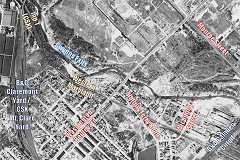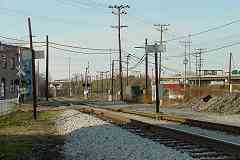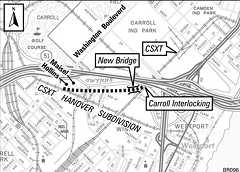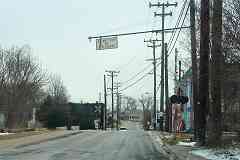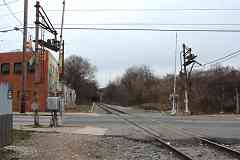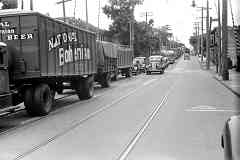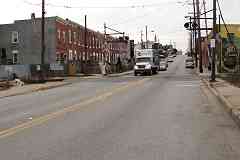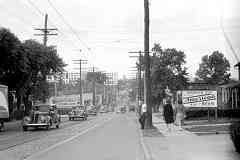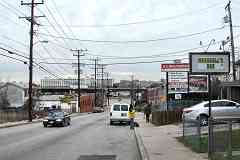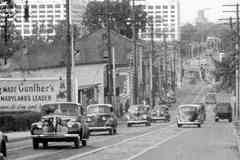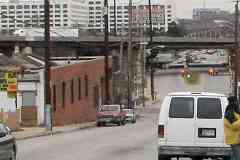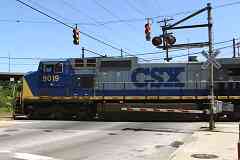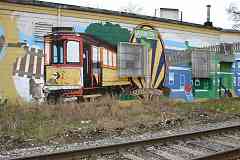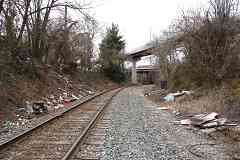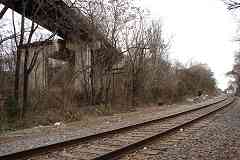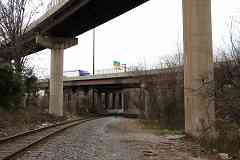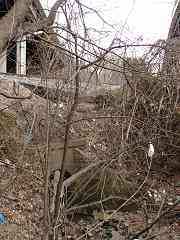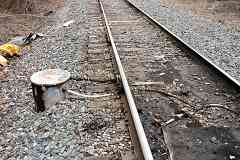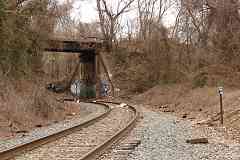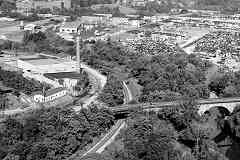|
Shortly before reaching Hollins Ferry Road, WM's Tide block began and, per
the sign, operated under Direct Traffic Control or Direct Train Control (DTC).
Under the DTC system a dispatcher gives direct authority for a train to enter
a block of track via radio instead of via a train orders office. A "block" is
a length of track that, per operational rule, is to be occupied by no more than
a certain number of trains, often just one, so as to minimize the chance of a
collision.
Hollins Ferry Road was so busy as to warrant standard automobile traffic signals
(note them hanging at left and right) in addition to the usual ones of railroad
style. That was likely a Baltimore City requirement. Beyond the grade crossing,
WM had a siding on the left that led to Reynolds Street.
There is scant information online about Hollins Ferry and Hammonds Ferry.
According to an 1898 atlas, the latter carried people and goods across the
Patapsco River on the downstream side of the subsequent Hammonds Ferry Road bridge.
Currently, rail traffic between Locust Point and points northeast travels via
the Howard Street Tunnel. If that tunnel is ever closed, an alternate route
will be needed. One alternate given consideration is the Locust Point Connecting
Track that would join here from the right.
Link:
Wikipedia's entry on DTC
| 